Cannabis growing FAQ
Grow Bags for Growing Cannabis | The Complete Guide
Published
1 year agoon
By
admin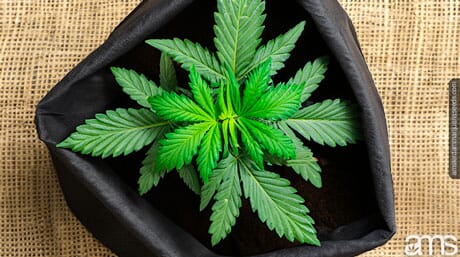
Introduction
Welcome to the ultimate guide on using grow bags for growing cannabis. Whether you’re a seasoned gardener or a cannabis enthusiast looking to cultivate your favorite strain, grow bags offer a versatile and efficient way to nurture healthy cannabis plants. In this article, we’ll answer the most frequently asked questions about grow bags for cannabis cultivation and provide valuable insights into their advantages, disadvantages, and optimal usage. Let’s dive in!
Are Grow Bags Better Than Buckets?
Grow bags have become increasingly popular among cannabis growers due to their numerous benefits. Unlike traditional buckets, grow bags offer superior aeration, root pruning, and drainage, creating a healthier environment for cannabis plants. The porous fabric of grow bags allows excess water to escape, preventing overwatering and root rot, which is a common issue with buckets. Additionally, grow bags are space-efficient and easy to store, making them a practical choice for indoor and outdoor cultivation.
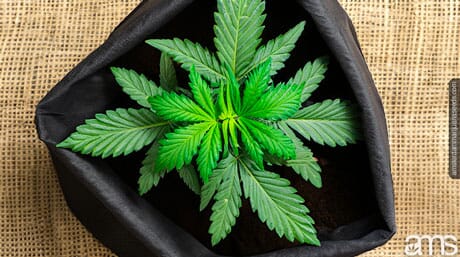
The Pros and Cons of Growing Bags
Like any gardening method, grow bags have their advantages and disadvantages. Let’s explore them in detail:
Pros:
- Aeration: Grow bags promote better air circulation, preventing root circling and promoting healthier root systems.
- Drainage: The breathable fabric ensures proper drainage, reducing the risk of overwatering.
- Prevents Overheating: Grow bags release excess heat, keeping the root zone cooler during hot weather.
- Space-Efficient: They can be easily arranged in tight spaces, maximizing planting area.
- Reusable: Quality grow bags can be washed and reused for multiple growing seasons.
Cons:
- Susceptibility to Drying: Grow bags may dry out more quickly than containers, necessitating more frequent watering in certain environments.
- Durability: Lower-quality grow bags may tear or degrade over time.
- Stability: The soft-sided nature of grow bags can be less stable than rigid containers.
What Size Grow Bag is Best for Indoor Cannabis?
The ideal size of a grow bag for indoor cannabis depends on the space available and the desired plant size. For most indoor growers, a 5-gallon grow bag is a popular choice. This size provides ample space for the roots to spread and promotes healthy growth without taking up excessive room. However, if you have limited space, consider using 3-gallon grow bags for smaller cannabis plants.
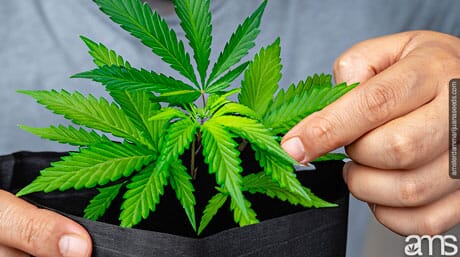
Do Bigger Grow Bags Mean Bigger Buds?
While the size of grow bags can influence plant growth, it’s essential to understand that bigger bags alone won’t guarantee bigger buds. The health and yield of cannabis plants depend on various factors, including light, nutrients, genetics, and environmental conditions. Adequate lighting, proper nutrition, and careful cultivation techniques play a more significant role in bud development.
Is Grow Bags Better for Roots?
Yes, grow bags are generally better for root health compared to traditional containers. The fabric material of grow bags allows air to reach the root zone, encouraging air pruning. When roots reach the fabric’s edge, they encounter air, causing the tips to desiccate and branching to occur. This process prevents root circling, promotes a more extensive root system, and enhances nutrient uptake.
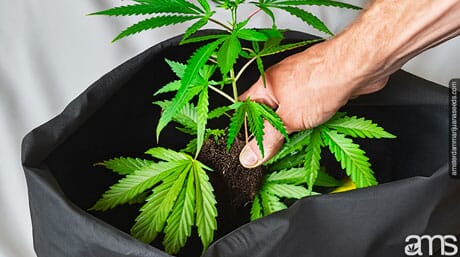
The Disadvantages of Using Grow Bags
While grow bags offer several advantages, it’s crucial to be aware of potential drawbacks:
- Frequent Watering: Grow bags may require more frequent watering compared to conventional containers due to their superior drainage and aeration.
- Durability: Lower-quality grow bags may tear or degrade over time, especially if reused for multiple seasons.
- Stability: Soft-sided grow bags may be less stable than rigid containers, requiring additional support in windy conditions.
Are Grow Bags Better Than Compost?
Grow bags and compost serve different purposes in cannabis cultivation. Grow bags are containers made of breathable fabric that promote healthier root systems through improved aeration and drainage. Compost, on the other hand, is a nutrient-rich organic material that enhances soil quality and fertility. While grow bags provide a conducive environment for roots, compost enriches the soil and provides essential nutrients for plant growth. When used together, grow bags and compost can complement each other, resulting in optimal cannabis growth.
Should I Use Potting Soil in Grow Bags?
Using high-quality potting soil is recommended when cultivating cannabis in grow bags. Look for well-balanced potting mixes that include a blend of peat moss, vermiculite, and perlite. These components provide essential nutrients, promote proper drainage, and offer the right level of aeration for healthy root development. Avoid using garden soil in grow bags, as it may lack the necessary properties and lead to poor plant growth.
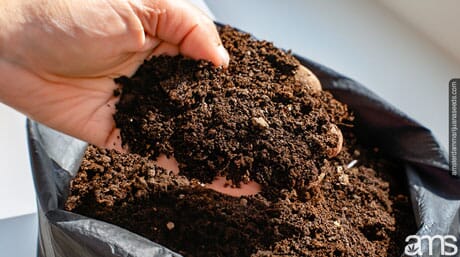
Are Grow Bags Better Than Plastic?
Grow bags and plastic containers cater to different gardening needs. While plastic containers are durable and stable, they lack the superior drainage and aeration of grow bags. The non-porous nature of plastic can lead to overwatering and root issues. Grow bags, with their breathable fabric, offer improved air circulation and prevent waterlogged roots. However, both options have their benefits and can be used successfully for cannabis cultivation based on personal preferences and growing conditions.
How Long Can a Grow Bag Last?
The lifespan of a grow bag varies depending on its quality and usage. High-quality grow bags made from sturdy fabric can last for several growing seasons if properly cared for and stored during the off-season. Regularly clean the grow bags after each use, allow them to dry completely, and store them in a cool, dry place to extend their lifespan.
Should I Put Holes in My Grow Bag?
Grow bags are designed with pre-made drainage holes to allow excess water to escape, preventing overwatering. However, in certain cases, additional holes may be necessary to ensure proper drainage, especially if you notice water pooling at the bottom of the bag. Use a sharp object to make small drainage holes at the bottom, ensuring they do not compromise the structural integrity of the bag.

Should I Put Rocks in the Bottom of My Grow Bag?
Adding rocks or stones at the bottom of grow bags is unnecessary and may lead to drainage issues. The practice was once believed to improve drainage, but it can create a false water table, leading to waterlogged soil at the root level. For optimal results, rely on the natural drainage provided by the grow bag’s fabric and ensure the bag has adequate drainage holes.
Do Grow Bags Get Too Hot?
Grow bags are designed to release excess heat, preventing the root zone from getting too hot. The breathable fabric allows air to circulate around the root system, maintaining a more stable temperature. However, in extremely hot climates, grow bags can still get warm. To mitigate this, place the grow bags in a shaded area or use mulch to insulate the root zone and retain moisture.
Do Grow Bags Need Perlite?
While perlite can enhance the drainage and aeration of potting soil, it is not essential for grow bags. Grow bags already provide excellent aeration and drainage due to their fabric material. However, if you prefer a looser soil mix, you can add perlite to your potting soil before filling the grow bags.
When Should You Stop Using a Grow Bag?
Grow bags are reusable and can last for multiple growing seasons. However, over time, the fabric may become worn or damaged. Consider replacing the grow bags if you notice significant tears or degradation that may compromise the root zone’s health. Regularly inspect the grow bags after each growing season to assess their condition.

What Can I Use Instead of Grow Bags?
If grow bags are not available, several alternative containers can be used for cannabis cultivation, including:
- Plastic Nursery Pots: Similar to grow bags but made of plastic, these pots provide good drainage.
- Fabric Pots: Fabric containers with properties similar to grow bags, promoting aeration and root pruning.
- Five-Gallon Buckets: While not as efficient as grow bags, buckets can still be used for cannabis cultivation with proper drainage and aeration.
Can You Use Grow Bags Twice?
Yes, grow bags can be reused for multiple growing seasons with proper care and maintenance. After each growing season, clean the grow bags thoroughly, allow them to dry completely, and store them in a cool, dry location. Inspect the grow bags for any signs of damage or wear before using them again.
What is the Best Size Grow Bag?
The best size grow bag for cannabis depends on several factors, including the available space, plant size, and growing environment. For most indoor growers, 5-gallon grow bags are a popular choice, offering ample room for root growth without taking up excessive space. Outdoor growers may opt for larger sizes, such as 10-gallon grow bags, for larger plants or increased root space.
Do Grow Bags Need Trays?
Grow bags typically do not require trays, as their superior drainage prevents water from pooling at the bottom. However, if you want to protect the surface beneath the grow bags or prefer a neater appearance, you can use trays or saucers.
How Many Plants Can You Put in a Grow Bag?
The number of plants per grow bag depends on the bag’s size and the intended plant size. In a 5-gallon grow bag, one healthy cannabis plant is typically recommended. For smaller cannabis plants or those with shorter growth periods, you may consider growing two plants in a 5-gallon grow bag. However, overcrowding should be avoided, as it can lead to competition for nutrients and space.
Can I Bottom Water in a Grow Bag?
While bottom watering can be done in certain situations, it is not the most efficient method for grow bags. Due to the breathable fabric, water may escape through the bottom, leading to uneven watering and potential overwatering. Instead, opt for top watering, allowing water to evenly disperse throughout the growing medium and promote even root growth.
Conclusion
Grow bags offer a fantastic option for cultivating healthy and thriving cannabis plants. With their excellent drainage, aeration, and root-friendly environment, they can help you achieve successful cannabis cultivation both indoors and outdoors. Consider the advantages and disadvantages of grow bags, select the appropriate size for your needs, and follow best practices to grow vigorous cannabis plants in these versatile containers. Happy gardening!
Frequently Asked Questions
Yes, grow bags are suitable for both indoor and outdoor cannabis cultivation.
Watering frequency varies depending on environmental conditions. Check the soil moisture regularly and water when the top inch feels dry.
Yes, DIY grow bags can be made from breathable fabric and are a cost-effective option.
Ensure proper spacing between plants and provide adequate support for taller cannabis varieties.
Regularly monitor water and nutrient levels, prune as needed, and protect the plants from pests and diseases.
Rinse the grow bags with water, scrub away any debris, and let them air dry before storing.
You may like
-


Karma Koala Podcast 238: Daniel Shortt Launches New Firm With Partner Perry Salzhauer In Pacific NW
-


Trump invites former cannabis prisoner to speech, but doesn’t mention cannabis (Newsletter: February 5, 2025)
-


Buddha Chief raises vibrations at new Housing Works dispensary in NoMad
-


3 best THCA vape carts of 2025 by Leafly
-


From client to co-founder, Storz & Bickel executive on US tour to drum up cannabis business
-


UNDERSTANDING CANNABIS AND CANNABINOIDS (THC and CBD)
Cannabis growing FAQ
Effective Techniques Preventing Controlling Fungus Mold
Published
6 months agoon
September 19, 2024By
admin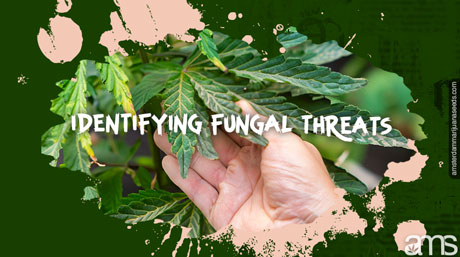
As a passionate cultivator of cannabis and an expert in the field, I’m eager to share my wealth of knowledge about one of the most critical aspects of cannabis growing – preventing and controlling fungus and mold. Whether you’re about to buy cannabis seeds for the first time or you’re an experienced grower, I guarantee this comprehensive guide will arm you with valuable insights to maintain your garden’s health and vitality.
So, let’s dive in and learn the tricks of the trade to keep those annoying fungal infections at bay.
Part 1: The Basics – Identifying Fungal Threats in Cannabis Growing
Before you can start preventing mold and fungus, it’s important to understand what you’re dealing with. When you buy cannabis seeds, you’re purchasing a promise of future growth. But like all living things, your cannabis plants are vulnerable to a range of fungal infections, including root fungus cannabis, black spot fungus, leaf fungus cannabis, and the dreaded powdery mildew fungus marijuana. Each of these pathogens can have detrimental effects on your marijuana seeds’ germination and overall plant health.
For instance, root fungus cannabis can lead to root rot, while black spot fungus creates small, dark spots on your cannabis leaves. Similarly, leaf fungus cannabis is characterized by browning and dying leaves, while powdery mildew fungus marijuana appears as a white, powdery substance on your plant’s leaves, stems, and buds.

Part 2: Preventing Fungus – An Ounce of Prevention Is Worth a Pound of Cure
Prevention is always the first line of defense. The key to preventing fungus in your cannabis growing process is maintaining optimal growing conditions and practicing good hygiene.
Firstly, always buy cannabis seeds from reliable sources to ensure they are disease-free. When sowing your marijuana seeds , it’s critical to use sterilized soil and pots. Remember to maintain a suitable pH level in the soil, between 6.0 and 7.0, as this can help prevent root fungus cannabis. Proper aeration and drainage are also vital in avoiding waterlogging, a condition that encourages fungal growth.
Regulating your growing environment’s temperature and humidity is another crucial factor in preventing mold. High humidity coupled with warm temperatures can provide the perfect environment for mold and fungus to thrive. Keep your humidity levels below 50% during the flowering stage to prevent issues like leaf fungus cannabis and black spot fungus.
Also, be mindful of overcrowding your plants as this can restrict airflow and create a damp environment conducive to fungal growth. Finally, the use of anti-fungal sprays can aid in fungus prevention, making your cannabis growing experience a fruitful one.

Part 3: How to Control Fungus in Soil and Your Cultivation Space
A crucial aspect of preventing fungus lies in the question, ‘How to control fungus in soil?’. This is where a good compost tea can come into play, by boosting beneficial bacteria in the soil that help keep fungal spores at bay.
Likewise, for controlling mold, regular inspections are vital. Examine your plants frequently for signs of mold at the early stages of growth. If you detect mold, prune the affected areas immediately to prevent further spread. Proper ventilation is also key in mold control cannabis. Fans, filters, and exhaust systems can help to keep air circulating and prevent moisture buildup.
Remember, fungus and mold thrive in damp, poorly lit areas. Therefore, ensure that your growing space is well-lit and adequately ventilated to maintain a healthy environment for your cannabis plants.

Part 4: Dealing with the Unavoidable – Treatments for Fungal Infections
Despite your best efforts, you might still encounter a fungal issue. Don’t fret! There are several methods for treating and controlling mold and fungus.
Fungicides can be helpful in combating these pests. Neem oil is a natural, safe choice that can effectively tackle powdery mildew fungus marijuana. Similarly, a baking soda and water mixture can be used as a homemade fungicide to treat black spot fungus and leaf fungus cannabis.
For a more serious infection like root fungus cannabis, you might need to resort to systemic fungicides or even consider repotting your plants in fresh, sterilized soil.
Regardless of the method you choose, remember to act quickly and decisively. Timely intervention is key in how to prevent a fungal infection from spreading and causing more damage.
To sum up, cannabis cultivation, whether from marijuana seeds or cuttings, is a rewarding endeavor that requires attention to detail, passion, and a fair share of knowledge on preventing fungus and mold. By keeping these pointers in mind, you can navigate the most common fungal threats, ensuring your cannabis growing endeavor remains as healthy and productive as possible.
Through learning how to control fungus in soil, practicing rigorous mold control cannabis, and always keeping an eye out for potential issues, you’re set on the path of successful cannabis cultivation. Now, whether you’re about to buy cannabis seeds or are already waist-deep in the throes of cannabis growing, you’re equipped to prevent, control, and treat any potential fungal hazards, making your journey in growing marijuana as smooth as possible.
FREQUENTLY ASKED QUESTIONS:
1. What are the common fungal threats in cannabis growing?
Common fungal threats include root fungus, black spot fungus, leaf fungus, and powdery mildew. Each can cause serious damage to your plants, so early identification and prevention are key.
2. How can I prevent mold and fungus in my cannabis garden?
Maintain optimal growing conditions by keeping humidity levels below 50%, ensuring good ventilation, and avoiding overcrowding. Use sterilized soil and pots, and always buy seeds from reliable sources.
3. What should I do if I detect fungus or mold on my cannabis plants?
Act quickly by pruning affected areas and applying natural fungicides like neem oil or a baking soda mixture. For severe root infections, consider using systemic fungicides or repotting in fresh, sterilized soil.
Cannabis growing FAQ
Environmental Factors Impact Cannabis Plants
Published
6 months agoon
September 19, 2024By
admin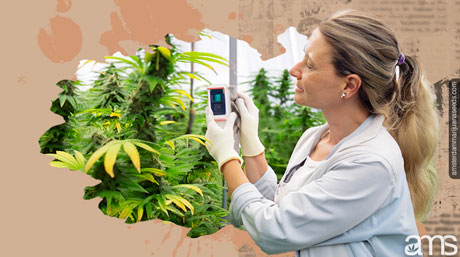
In this article you will find answers to following questions: How does temperature affect cannabis plants?, What are the effects of light stress on marijuana cultivation?, Why is it essential to control humidity for cannabis plant health?, What are some environmental factors impacting marijuana plants?, How can you mitigate the impact of temperature on cannabis cultivation?, What methods can be used to manage humidity for better marijuana growth?, Why is understanding environmental factors crucial for cannabis cultivation?, How does light stress influence marijuana plant health?, What are some ways to regulate temperature during cannabis growth?, How do environmental factors affect the overall health of marijuana plants?
Understanding the Environmental Factors Affecting Cannabis Cultivation
As a passionate marijuana grower, you know that cultivating healthy and thriving cannabis plants requires more than just planting seeds and watering them. Environmental factors play a crucial role in the success of your marijuana cultivation endeavors. In this comprehensive guide, we will explore the various environmental challenges cannabis plants face, such as temperature, humidity, and light stress, and how you can effectively mitigate their effects.
1. Marijuana seeds – The Foundation of Your Growth
To embark on a successful cannabis cultivation journey, the first step is acquiring high-quality cannabis seeds. When you buy marijuana seeds, make sure to choose a reputable source that offers a wide variety of strains to suit your preferences and growing conditions. Whether you’re looking for auto-flowering, feminized, or regular cannabis seeds , do thorough research to ensure you are investing in premium genetics.
2. Cannabis Temperature – Striking the Right Balance
Temperature regulation is one of the most critical factors that can significantly impact cannabis plants. These green beauties thrive in a specific temperature range, ideally between 20°C to 30°C (68°F to 86°F) during the light period, and slightly cooler temperatures, around 18°C to 24°C (64°F to 75°F) during the dark period. Fluctuations outside this range can result in adverse effects on growth, flowering, and overall plant health.
During the colder months, consider using heaters to maintain the desired temperature range in your grow room. Conversely, for hot summer days, invest in ventilation systems or air conditioning to prevent the plants from becoming stressed due to excessive heat.

3. Humidity Control – The Key to Preventing Mold and Mildew
Humidity management is another vital aspect of marijuana cultivation. High humidity levels can lead to mold and mildew issues, which can be devastating for your plants. On the other hand, low humidity levels can cause stress, slow growth, and negatively impact the yield.
For the vegetative phase, maintain humidity levels between 40% to 70%. As the plants enter the flowering phase, gradually reduce humidity to around 40% to 50% to prevent mold development in the dense buds.
To maintain optimal humidity levels, use humidifiers or dehumidifiers as necessary. Additionally, proper airflow in the grow room will aid in regulating humidity levels and minimize the risk of mold and mildew.
4. Light Stress Effects – Striving for the Perfect Balance
Light stress can have both positive and negative effects on cannabis plants, depending on how it is managed. Adequate light is essential for robust growth and high-quality yields. However, too much light, especially during the flowering phase, can lead to light stress and hermaphroditism.
During the vegetative phase, marijuana plants thrive under 18 to 24 hours of light per day. Once they enter the flowering phase, reduce the light exposure to 12 hours per day to trigger bud development. Ensure a consistent light schedule, as any interruptions can cause stress and negatively affect your plants.
If you are growing outdoors, be mindful of natural light sources, such as streetlights or security lights, which can disturb the dark period for your plants. Consider using blackout curtains or light-blocking materials to maintain a strict light schedule.
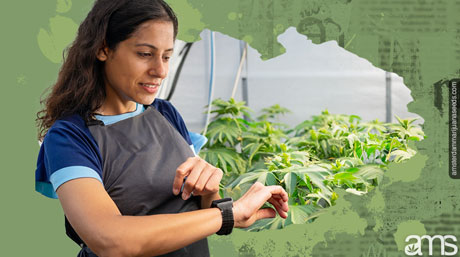
Mitigating Environmental Stress for Healthy Cannabis Plants
Creating an optimal growing environment is fundamental to mitigating environmental stress and fostering healthy marijuana plants. Investing in a well-insulated and properly sealed grow room allows you to have better control over temperature, humidity, and light exposure.
Additionally, consider using reflective materials such as Mylar or white paint on the walls of your grow room to ensure maximum light penetration and distribution. A reflective surface can enhance the efficiency of your grow lights, allowing your plants to receive more usable light.
Temperature and Humidity Monitoring
Maintaining the optimal temperature and humidity levels can be achieved through diligent monitoring. Use thermometers and hygrometers to regularly check the conditions in your grow room. Many modern monitoring systems even allow remote access, enabling you to keep an eye on your plants from anywhere.
With this data at hand, you can quickly identify any deviations and make necessary adjustments to keep your cannabis plants in the comfort zone.
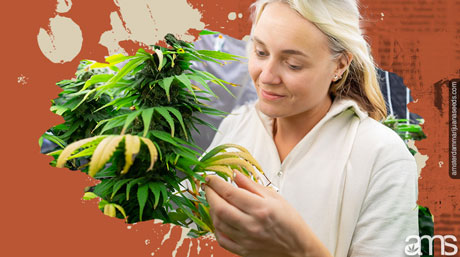
Proper Ventilation and Airflow
Adequate ventilation and airflow are vital for a healthy marijuana garden. A well-ventilated grow room not only helps regulate temperature and humidity but also provides plants with fresh CO2, which is essential for photosynthesis.
Install exhaust fans to expel hot and stale air, and intake fans to bring in fresh air. Place fans strategically to ensure even distribution of air throughout the grow room. Creating a gentle breeze helps strengthen the plants’ stems and prevents stagnant air that could promote mold growth.
Light Stress Management
To minimize light stress, choose the right type of grow lights for your marijuana plants. LEDs, HPS, and CMH lights are popular choices for indoor growers. Each light type has its advantages and disadvantages, so do your research and select the best option based on your specific needs and budget.
During the flowering phase, remember to keep your grow room as dark as possible during the 12-hour dark period. Light leaks can cause stress and interrupt the plants’ natural light cycle, potentially leading to reduced yields and compromised quality.
Nurturing Your Cannabis Plants for Optimal Growth
Proper watering is crucial for healthy marijuana plants. Overwatering can lead to root rot and other moisture-related issues, while underwatering can cause the plants to wilt and suffer nutrient deficiencies.
Water your plants when the top inch of the soil feels dry to the touch. Use your fingers to gauge the moisture level and adjust your watering schedule accordingly. Cannabis plants generally prefer a slightly acidic pH level, around 6.0 to 6.5, in the soil or growing medium.
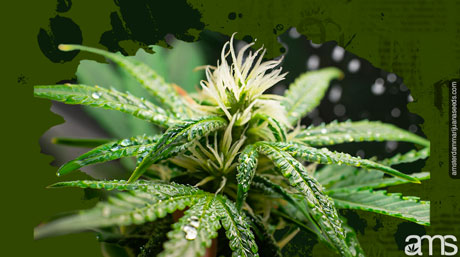
Nutrient Management
Marijuana plants require a balanced nutrient regimen to thrive. Provide the necessary macro and micronutrients through well-formulated fertilizers. Nutrient deficiencies or excesses can lead to various issues, including stunted growth and nutrient lockout.
Pay attention to the specific nutrient needs of your plants during different growth stages. For example, during the vegetative phase, they require higher levels of nitrogen to support leafy growth, while the flowering phase requires a shift to higher phosphorus and potassium levels to support bud development.
Training and Pruning
Pruning and training techniques can help improve light distribution within the canopy, leading to better overall growth and bud development. Topping, FIMing, and LST (Low-Stress Training) are common methods used by growers to encourage bushier plants and maximize light exposure to lower bud sites.
Pests and Disease Prevention
Keep a close eye on your marijuana plants for any signs of pests or diseases. Early detection is essential to prevent infestations from spreading and causing significant damage to your crops. Use organic pest control methods whenever possible to minimize the use of harmful chemicals.
Additionally, maintain a clean and sanitized grow room to reduce the risk of pests and diseases taking hold. Regularly inspect your plants and surrounding areas, and promptly address any issues you may encounter.
The Satisfying Rewards of Expert Cannabis Cultivation
Congratulations, you’ve now equipped yourself with the knowledge to successfully navigate the challenges posed by environmental factors when growing marijuana. By maintaining optimal temperature and humidity, managing light stress, and providing the right care, you can ensure healthy and thriving cannabis plants that will reward you with bountiful harvests. Happy growing!
FAQ
1. How does temperature affect cannabis plants? Temperature plays a crucial role in the growth and health of cannabis plants. Ideal temperatures range between 20°C to 30°C (68°F to 86°F) during light periods and slightly cooler, 18°C to 24°C (64°F to 75°F), during dark periods. Deviations can harm plant growth, affect flowering, and lead to stress. Maintaining proper temperature is key to healthy cultivation.
2. Why is humidity control important in cannabis cultivation? Managing humidity is essential to prevent issues like mold, mildew, and slow growth. Cannabis plants need different humidity levels in their vegetative and flowering stages, with ideal ranges of 40-70% in vegetative and 40-50% during flowering. Proper control promotes better yields and overall plant health.
3. What are the effects of light stress on cannabis plants? Light stress can either enhance or harm cannabis plants, depending on how it is managed. Excess light exposure can lead to stress, especially in the flowering phase, while insufficient light hinders growth. Regulating light exposure is critical to ensuring healthy development and avoiding problems like hermaphroditism.
Cannabis growing FAQ
Essential Elements Create A Optimal Environment
Published
6 months agoon
September 19, 2024By
admin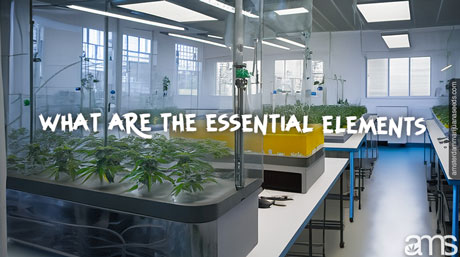
In this article you will find answers to following questions: what are the germination essential elements?, what constitutes a suitable germination environment?, what are the key seed germination factors?, what are the optimal germination conditions?, what is the ideal germination temperature range?, what are the marijuana seeds moisture requirements for germination?, what are the specific light needs during germination?, how does soil composition affect germination?, what are some cannabis seed germination tips?, what are some successful germination strategies?
Hello fellow enthusiasts, welcome back to our deep dive into the art of cannabis cultivation. If you’re here, you’re likely pondering about the mysterious journey from a single seed to a thriving plant, specifically the pivotal phase of germination. After all, as our humble cannabis growing experience has taught us, germination sets the foundation for a healthy and successful harvest. Today, we’re focusing on the core aspects that make up the optimal germination conditions, and how to maneuver through the unique challenges of this critical phase.
Perhaps you’ve decided to buy cannabis seeds for the first time, or you’re an experienced cultivator seeking to maximize your yield. Regardless, understanding the germination essential elements is the first stepping stone in your cannabis growing endeavor. Whether you’re working with marijuana seeds, the underlying principles of germination remain the same.

Acquiring Quality Seeds
Before you even contemplate creating the suitable germination environment, it is essential to source high-quality cannabis seeds. The importance of using top-notch seeds cannot be understated; it’s the foundation of your cannabis growing adventure.
Be selective when you buy cannabis seeds. Look for mature seeds with a hard outer shell, typically dark brown with lighter accents. Immature seeds are generally green or white, and while they may still germinate, they will likely struggle in the early stages of growth, leading to a subpar yield.
The Perfect Temperature
In establishing the optimal germination conditions, understanding the right germination temperature range is pivotal. Your cannabis seeds, just like all seeds, are biologically programmed to sprout under particular environmental conditions. In nature, this typically occurs in spring when the soil warms up.
Maintaining a germination temperature range of 70-85°F (20-30°C) is ideal. This range mimics the warmth of spring and triggers the seeds to germinate. Keep a close eye on your temperature, ensuring it stays within this range. Too cold, and the seeds will remain dormant; too hot, and the seeds might get damaged.
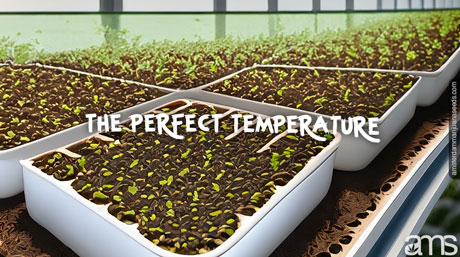
The Right Amount of Moisture
Another essential aspect of creating a suitable germination environment is managing seed moisture requirements. Seeds require a moist environment to sprout, as the water softens the hard outer shell and triggers the growth of the radicle (the embryonic root).
Ensure your medium remains moist but not waterlogged, as this could lead to fungal issues and waterlogging. Mist your cannabis seeds with a spray bottle if you find the medium drying out too quickly. Remember, the goal is to mimic nature’s moist spring soil, not a swamp.
Light Levels
While the role of light in the germination process may seem secondary, understanding germination light needs is a crucial aspect of successful germination strategies. Most seeds, including cannabis seeds , need a certain light spectrum to trigger growth after the germination process has started.
After sprouting, your cannabis seedlings require plenty of light to grow strong and healthy. Keep them under a suitable light source, such as full spectrum LED lights, ensuring they get 16-18 hours of light per day.
Soil Composition
Your choice of growth medium can drastically impact your germination success. Let’s explore the role of soil composition in germination.
Soil provides a nurturing environment for your cannabis seeds, packed with the nutrients they need to sprout. A light, well-aerated soil with good drainage is ideal for cannabis growing. This sort of composition facilitates optimal root development and ensures your seedlings don’t become waterlogged.
Consider using a soil mix specifically formulated for seed germination. This type of mix generally contains peat moss or coconut coir, perlite or vermiculite, and sometimes a bit of slow-release granular fertilizer.
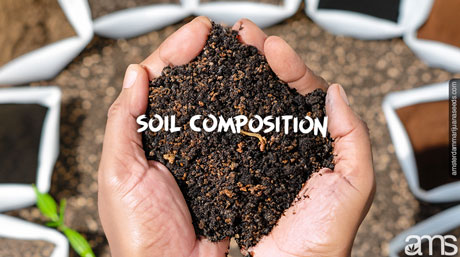
Seed Germination Tips
Armed with the knowledge of these seed germination factors, you’re well on your way to mastering the art of cannabis growing. But let’s dive a bit deeper with some more specific seed germination tips.
Firstly, always handle your seeds gently to avoid causing any damage. Use a pair of tweezers if necessary. Secondly, consider soaking your cannabis seeds in a glass of distilled water for 12-24 hours before planting them. This can help soften the outer shell and kickstart germination.
Refining your Approach
Creating the ideal conditions for your cannabis seeds to germinate is part art, part science. As you continue to refine your successful germination strategies, remember that each seed is unique and might require slightly different conditions to sprout. Be patient, observe carefully, and adjust your approach as necessary.
In conclusion, the magic of turning cannabis seeds into a thriving plant lies in a deep understanding of the germination essential elements and the ability to provide them consistently. This intricate dance with nature can indeed be challenging, but the rewards are beyond satisfying.
Remember, even the most seasoned cannabis cultivators are always learning and experimenting. So whether you’re about to buy cannabis seeds for the first time or you’re an experienced hand at cannabis growing, keep pushing the boundaries of your knowledge, and happy growing!
FAQ
1. What are the key factors for successful cannabis seed germination?
Successful cannabis seed germination requires the right temperature, moisture, light, and soil composition. Ensuring a stable environment with temperatures between 70-85°F (20-30°C), proper moisture, and light exposure is essential for healthy sprouting.
2. What is the ideal temperature range for germinating cannabis seeds?
The optimal temperature range for cannabis seed germination is 70-85°F (20-30°C). This warmth mimics natural spring conditions, promoting seed sprouting and healthy growth.
3. How does soil composition affect cannabis seed germination?
A well-aerated, nutrient-rich, and well-draining soil mix is crucial for cannabis seed germination. Using a mix that includes materials like peat moss, perlite, or coconut coir helps provide a supportive environment for root development and prevents waterlogging.

Karma Koala Podcast 238: Daniel Shortt Launches New Firm With Partner Perry Salzhauer In Pacific NW
Trump invites former cannabis prisoner to speech, but doesn’t mention cannabis (Newsletter: February 5, 2025)

Buddha Chief raises vibrations at new Housing Works dispensary in NoMad

3 best THCA vape carts of 2025 by Leafly

From client to co-founder, Storz & Bickel executive on US tour to drum up cannabis business

UNDERSTANDING CANNABIS AND CANNABINOIDS (THC and CBD)

The Rise and Fall of the Cannabis Industry

High Stakes and High Demand: Will Las Vegas Finally Allow Cannabis Near Casinos?

Cannabis Tourism in 2025: Destinations, Trends, and Tips

The Rise of Cannabis in Florida

Distressed Cannabis Business Takeaways – Canna Law Blog™

United States: Alex Malyshev And Melinda Fellner Discuss The Intersection Of Tax And Cannabis In New Video Series – Part VI: Licensing (Video)

What you Need to Know

Drug Testing for Marijuana – The Joint Blog

NCIA Write About Their Equity Scholarship Program

It has been a wild news week – here’s how CBD and weed can help you relax

Cannabis, alcohol firm SNDL loses CA$372.4 million in 2022

A new April 20 cannabis contest includes a $40,000 purse

Your Go-To Source for Cannabis Logos and Designs

UArizona launches online cannabis compliance online course
Trending
-

 Cannabis News2 years ago
Cannabis News2 years agoDistressed Cannabis Business Takeaways – Canna Law Blog™
-

 One-Hit Wonders2 years ago
One-Hit Wonders2 years agoUnited States: Alex Malyshev And Melinda Fellner Discuss The Intersection Of Tax And Cannabis In New Video Series – Part VI: Licensing (Video)
-

 Cannabis 1012 years ago
Cannabis 1012 years agoWhat you Need to Know
-

 drug testing1 year ago
drug testing1 year agoDrug Testing for Marijuana – The Joint Blog
-

 Education2 years ago
Education2 years agoNCIA Write About Their Equity Scholarship Program
-

 Cannabis2 years ago
Cannabis2 years agoIt has been a wild news week – here’s how CBD and weed can help you relax
-

 Marijuana Business Daily2 years ago
Marijuana Business Daily2 years agoCannabis, alcohol firm SNDL loses CA$372.4 million in 2022
-

 California2 years ago
California2 years agoA new April 20 cannabis contest includes a $40,000 purse



